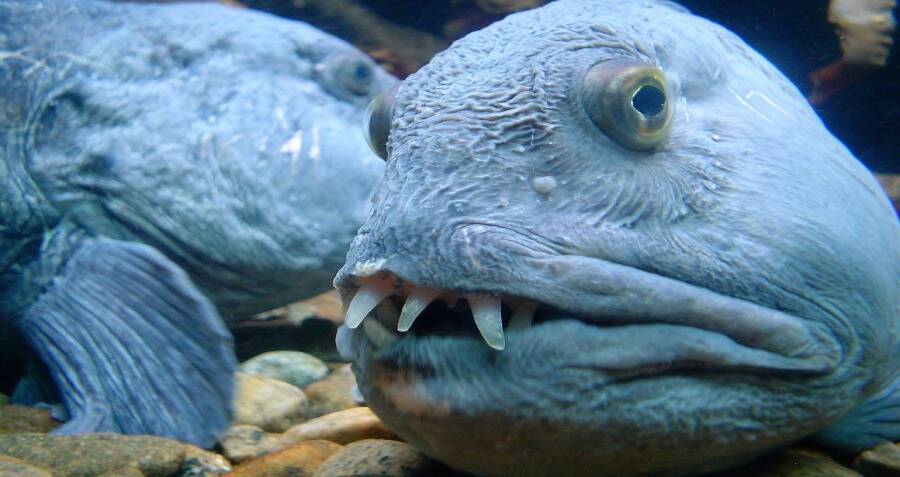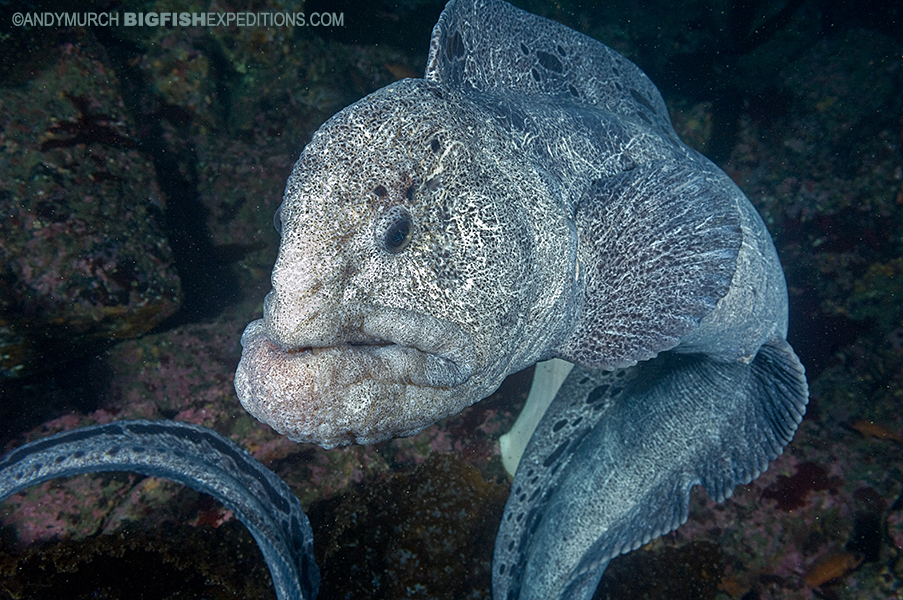

Anarrhichthys comes from the Greek word Anarhichas, which is a Greek fish that the wolf-eel resembles. Its scientific name, Anarrhichthys ocellatus, comes from both Greek and Latin. Divers travel from all over the world to glimpse these fascinating creatures and they go through all manner of underwater gyrations to get the perfect photo that proves that they, too, were able to ∽ance with Wolfies.Īctually a wolf fish, not an eel, the wolf-eel can be found as far south as San Diego in southern California, then northward to the Aleutian Islands in Alaska.

Theres something about the supremely ugly face of an adult wolf-eel staring at you from its den that will turn an ordinary dive into a great one - poor visibility, terrible weather, rotten currents - all will be forgotten and forgiven once a Wolfie makes a public appearance. Get any group of divers together in the Pacific Northwest and ask them to reach a consensus on what the requirements are for a really GREAT dive, and invariably one of the things they will ultimately agree on is that a wolf-eel will somehow be involved. After much reflection, Im convinced that the make-up artists for the film MUST have taken their inspiration from the divinely ugly mugs of big male Wolfies. Last year I attended a local showing of the Hollywood blockbuster, Lord of the Rings. Frequently, the heroes of the film were attacked by masses of hideous, howling and slathering Orcs. I was absolutely struck by how much the Orcs resembled one of my favorite underwater creatures here on the west coast, the wolf-eel. Fisheries that harvest octopuses, urchins, and crab may remove prey resources that wolf-eel depend upon" (Jaglio 6).Wold Eel Ugly Man of the Sea ADVANCED DIVER MAGAZINE by John RawlingsĪbove: A gaping wound in its forehead providing probable evidence of a lost mating battle, a large male wolf-eel glides past Marine Biologist Tony Parra near South Puget Sound's Sunrise Wall. There were no wolf-eel present when surveyed. Trawler nets, which many fishermen use, are particularly damaging because they destroy rocky reefs where wolf eels reside. Conservationists and scientists suggest using alternative method of logline traps which won't damage the reefs.Īccording to Washington Department of Fish and Wildlife "the wolf eel appears to be a species that is sensitive to harvest and may be affected by competition with Pacific giant octopus and with fisheries During 1999, one area in the harvest zone was surveyed that once contained a large wolf-eel colony. Because wolf eels make their home in rocky reefs their homes are susceptible to damage from storms, pollution, trawler nets and other factors. Human pollution can affect wolf eel habitat, degrading it and making it uninhabitable. Wolf eels are often caught in crab traps or fishing nets.

Images of a wolf eel skin#
About two thirds were speared by skin divers and most of the others were caught by skiff fishermen. Crey's article discusses a breeding and release program for VPA.Ī survey from 1957-1961 stated that sport fishermen took an estimated 200 wolf eels a year. There have been efforts to restore wolf populations in some areas. Local populations of wolf eels have been wiped out in waters of many metropolitan areas as a consequence of fishermen and aquarium collectors as well as habitat destruction, pollution and accidental catching once eliminated from a site wolf eels will not return naturally (Creys).


 0 kommentar(er)
0 kommentar(er)
